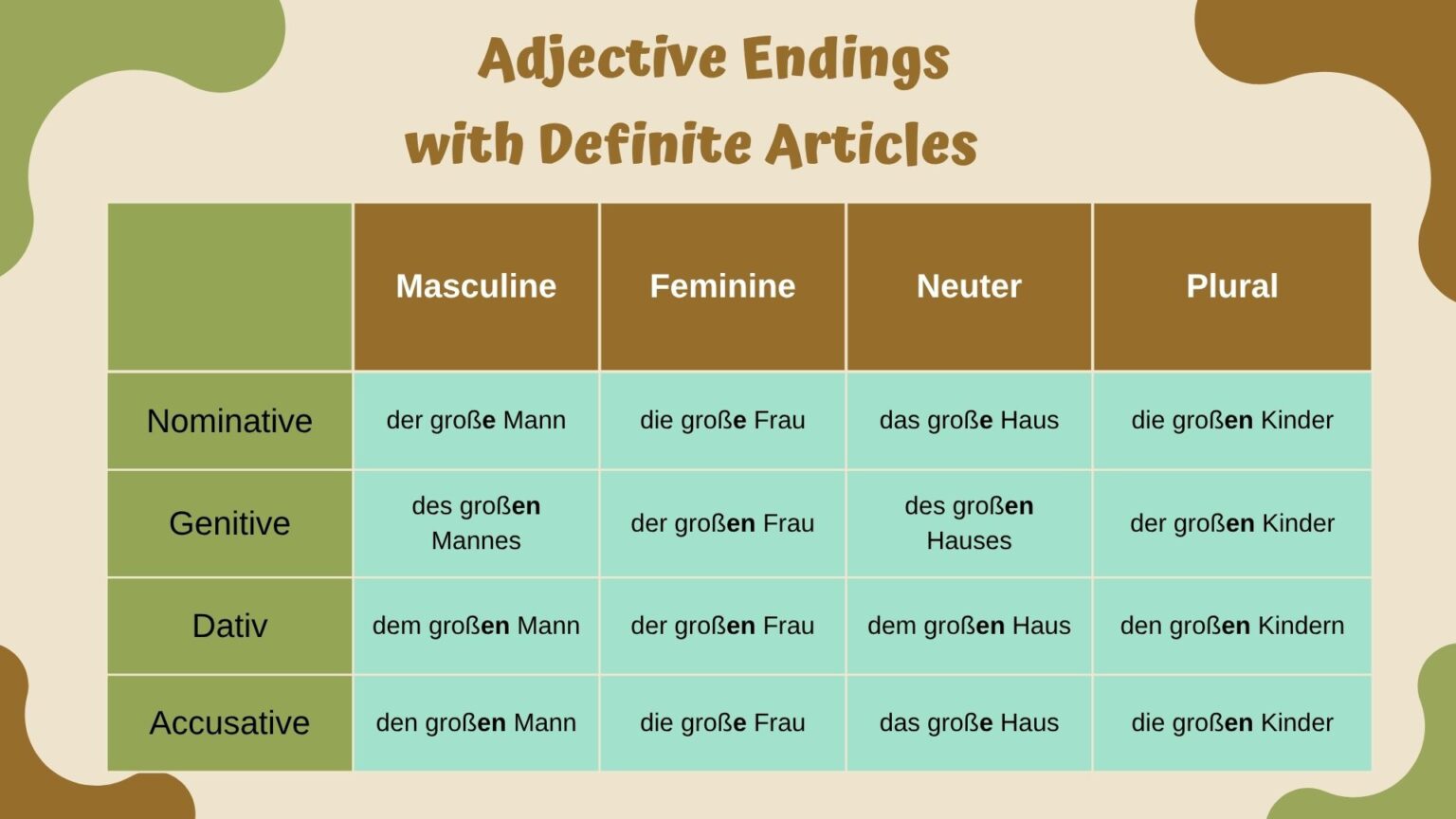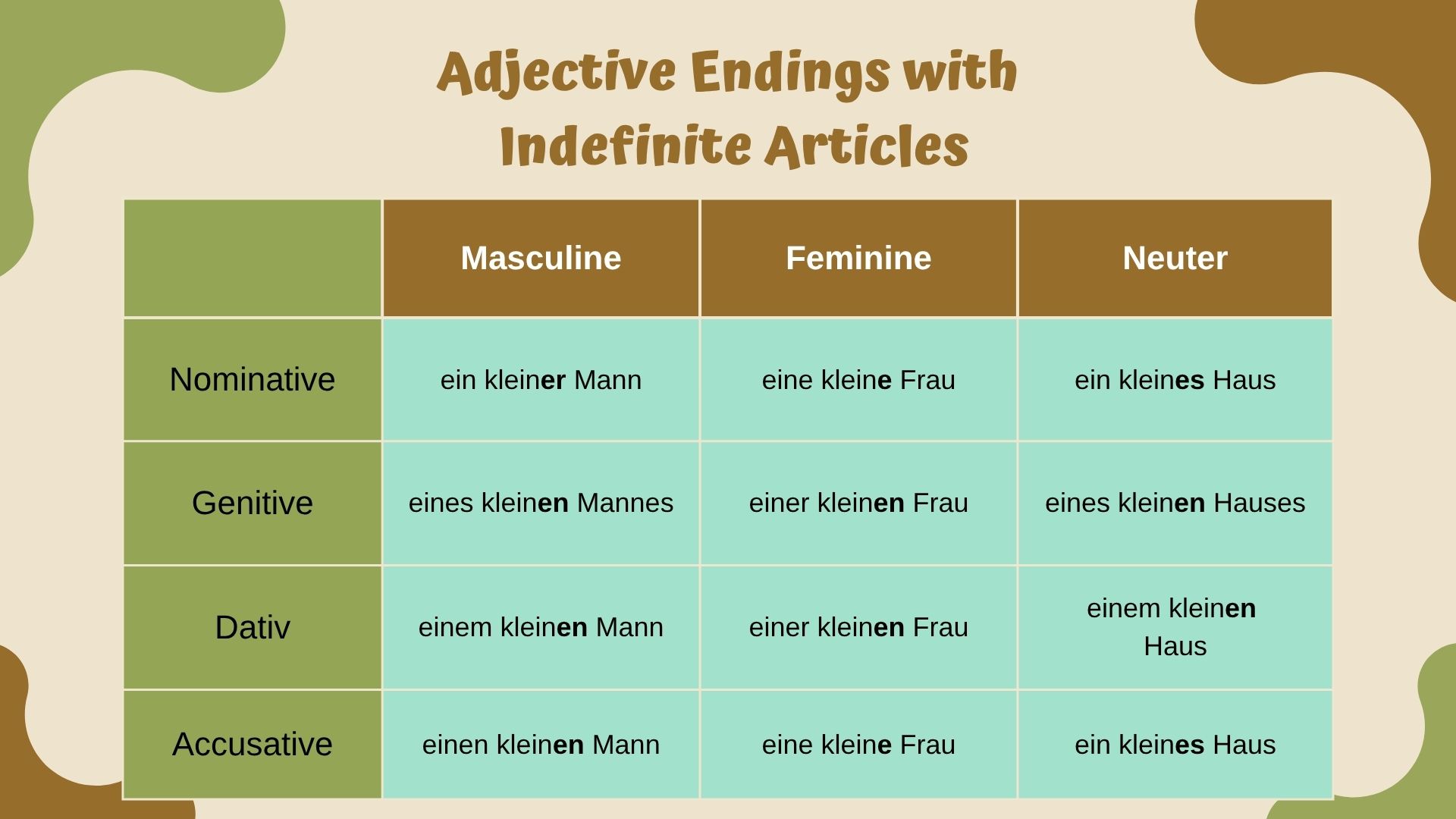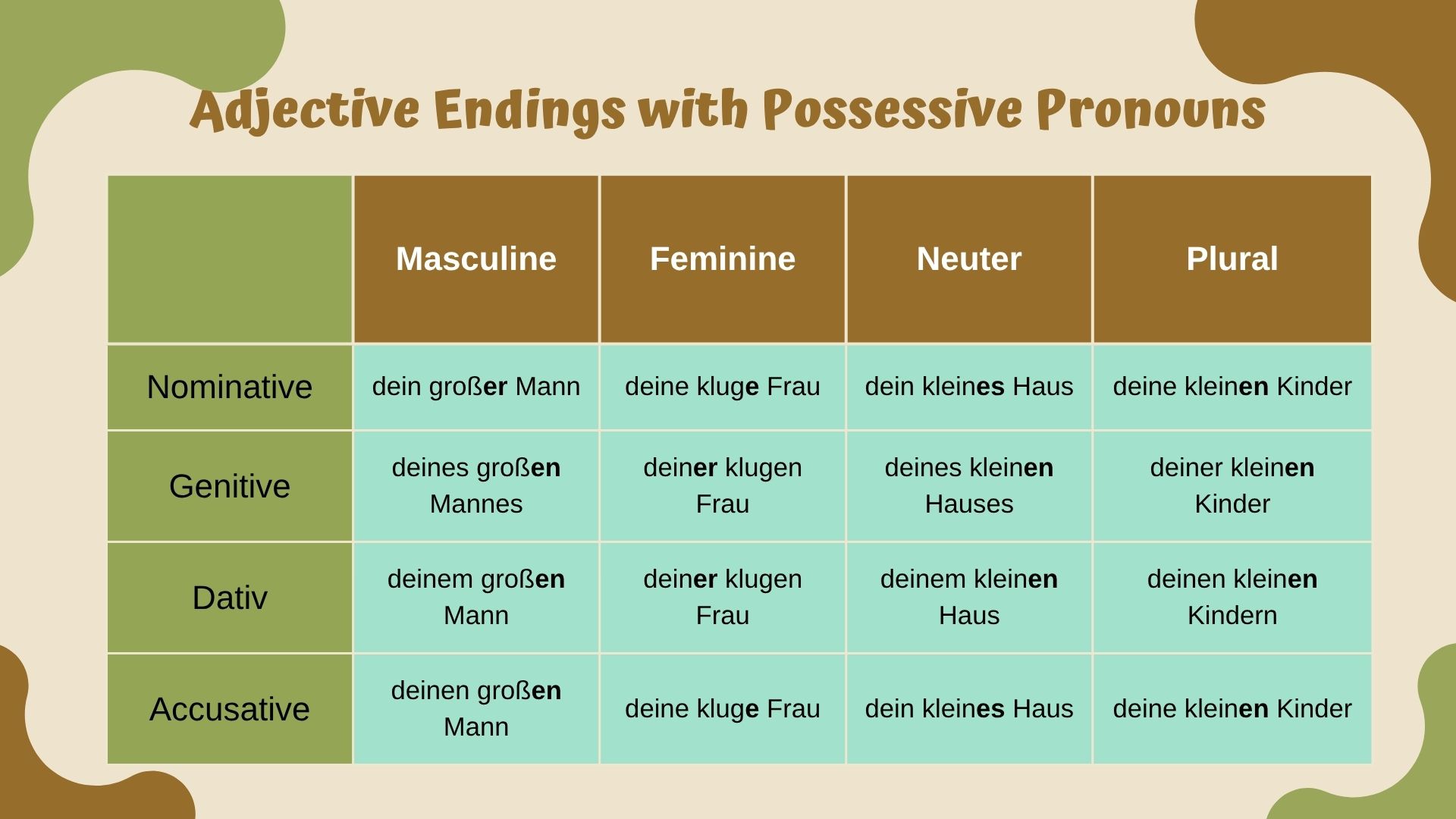Master German Adjective Endings – A2–C1 eBook
Clear explanations. Clean charts. 50+ exercises with answers. Improve accuracy in writing and speaking—fast.

Why this German adjective endings eBook converts study time into results
All endings made simple
Learn every pattern with charts, color-coding, and short examples. No fluff. Just the rules you need.
50+ exercises from A2 to C1
Gap filling, sentence forming, mistake finding. Sharpen accuracy step by step.
Answers included
Check progress fast. Fix errors early. Build confidence for Telc, Goethe, or TestDaF.
Look inside: charts and practice




Adjective Endings with Definite Articles – Gap Fill
Thema: Ein ganz normaler Tag
Instructions:
Complete the text by inserting the correct adjective endings. All nouns in the text have a definite article (der, die, das). Pay attention to gender, case, and singular/plural forms.
Frau Meier steht früh auf. Sie macht zuerst das __________ (1. frisch) Fenster auf und atmet tief ein. Dann geht sie in die Küche und bereitet das __________ (2. klein) Frühstück vor. Sie isst ein Brot mit der __________ (3. lecker) Marmelade und trinkt den __________ (4. warm) Kaffee.
Nach dem Frühstück zieht sie sich an. Sie trägt den __________ (5. blau) Pullover und die __________ (6. neu) Hose, die sie gestern gekauft hat. Danach geht sie mit dem __________ (7. alt) Hund spazieren. Der Spaziergang durch den __________ (8. ruhig) Park gefällt ihr sehr.
Mittags kocht sie das __________ (9. einfach) Gericht:
Nudeln mit der __________ (10. rot) Soße. Am Nachmittag liest sie ein Kapitel in dem __________ (11. spannend) Buch, das sie von der Bibliothek hat. Später ruft sie die __________ (12. gut) Freundin an und erzählt ihr von dem __________ (13. anstrengend) Arbeitstag.
Am Abend genießt sie die __________ (14. entspannt) Stimmung in ihrer Wohnung.
Preview only — 50+ exercises + answers included in the eBook.
About the author: Nikolai Beiers
Founder of HowToStudyGerman.com. 7+ years of online teaching. Prepared learners for Telc, Goethe, TestDaF. Focus on clear explanations and results.
Explore grammar guides: Adjective endings guide. Learn more: Author page.
FAQ
What is the price?
The eBook costs 10 USD (digital download).
Who is the author?
Nikolai Beiers (called Niko). Learn more on the Author page.
Who is the publisher?
How To Study German LLC.
Why is the eBook sold via Paddle.com?
Paddle acts as the Merchant of Record, handling VAT, invoicing, and compliance. That makes it easier for small/medium businesses to follow EU rules.
Who is this book for?
A2–C1 learners who want to master German adjective endings systematically—great for self-study or exam prep (Telc, Goethe, TestDaF).
How is it structured from A2 to C1?
Short explanations + charts first, then practice: gap fill, sentence forming, and mistake finding. Difficulty increases step by step.
Are answers included?
Yes. Complete solutions are included for every exercise to check progress and learn from mistakes.
What is the format?
eBook (digital). Optimized for desktop, tablet, and mobile reading. Charts are printable.
Start learning German adjective endings today
Get the German adjective endings eBook for 10 USD. Learn with charts and 50+ exercises. Answers included.
